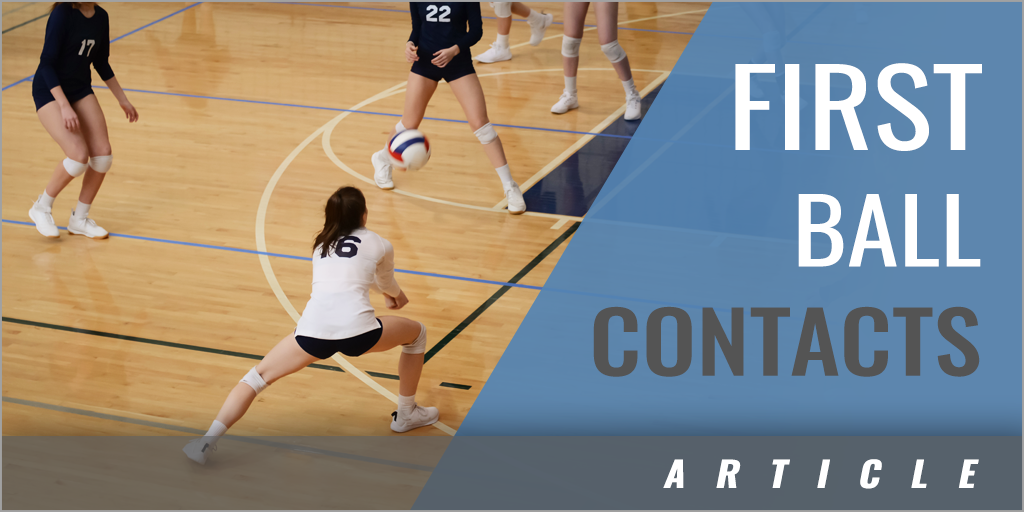|
By: Bill Neville Originally Published in: The Volleyball Coaching Bible, Volume II Provided by: Human Kinetics The ball comes over the net from the opponent in four ways: as a free ball, a down ball, an attacked ball, or a serve. Even though there are various types of serves, the movement of the served ball is the most predictable because it begins play and all passers are in position. At younger ages, the serve generally dominates the receiving team because (1) the server is in control of the event and can dictate the terms of engagement and (2) it is easier for players to master the serve than the more complex serve receive. As players mature and play more, their serve-receive abilities begin to catch up, although at the highest levels of play, players still find it a challenge. Free Balls A free ball usually is the easiest of the first-ball contacts-or at least it should be. It is usually a saving play because the opponent is merely trying to keep the ball in play. The ball often comes over in a rainbow arc. In Japan, a free ball is translated as an "opportunity ball" because it is a ball that should be easy to control, and the receiving team should be able to counterattack with a full complement of weapons. This ball should be controlled overhead to maximize the speed of the counterattack. However, many coaches prefer that players always pass with their forearms. Down Balls A down ball is often described as a ball that goes down. Actually, the term refers to a down block. The ball comes across in a flat trajectory with some heat and often with topspin. It is often sent across the net from deep in the court or hit from a standing position. The block determines whether it is not hit hard enough or is hit from too great a distance to block. Therefore, the blockers yell "down!" because the flat trajectory of the down ball is usually handled with a forearm pass. Attacked Balls An attacked ball has a number of personalities. The one consistency is that the attacker gets an approach and jumps. There are a variety of approaches as well, but generally they lead the hitter to jump. Attacks range from a tip (the softest of contacts) to an all-out swing. Moreover, attackers hit a mix of angles and spots. In general, approximately 80% of attacks are hit in the direction of the approach angle. The better the attacker, the wider range the attacker can hit. Much like a good pitcher in baseball, the volleyball attacker can vary the velocity and locations. An attacker who is very consistent with her velocity and angles is easy to defend. However, the attacker with a good mix of velocities and angles is difficult. Serves The serve is the most common first ball. It is arguably the toughest of the firstball opportunities because the server (if good) has complete control. Even though it seems that the hard-hit attack is the toughest, it doesn't happen as often as the serve. Statistics show that the winner of the serve-and-receive game often wins the match. |







